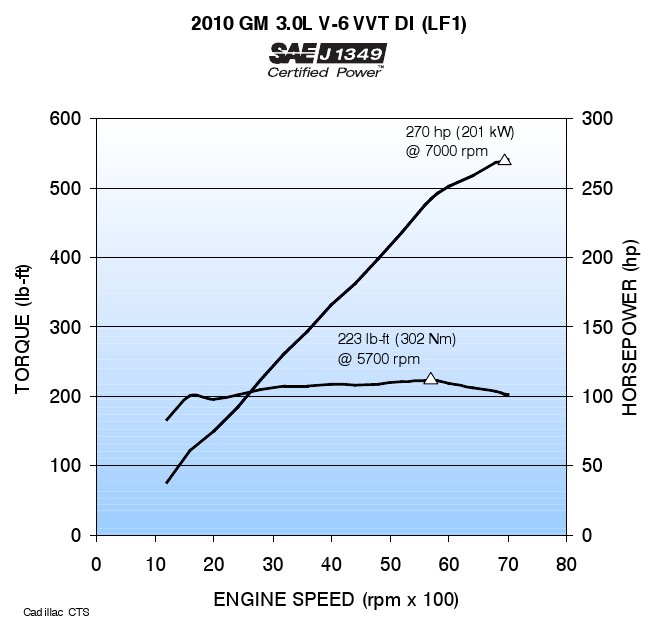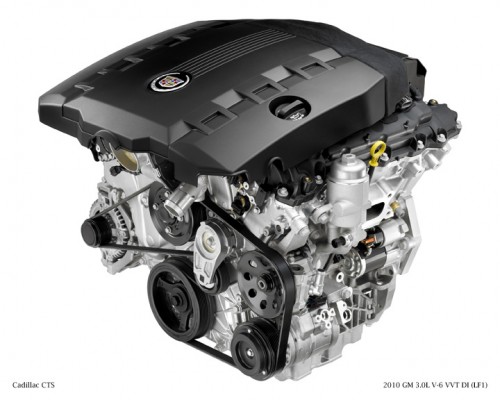Cadillac replaced the LY7 non-direct injected 3.6L V6 as the base engine in the CTS Family in 2010. The new base engine is the LF1 3.0L direct injected V6. How do these two engines compare?
The LY7 V6 was used by Cadillac from 2004-2009. Originally it made 255 hp, but was improved to 263 hp in 2008 in this application. To be specific, 263 hp (196 kW) @ 6400 rpm and 253 lb-ft (342 Nm) @ 3100 rpm of torque.
The LF1 V6 is a 3L variant of the direct injected 304 hp 3.6L V6 in the CTS Performance or Premium models. In the CTS family it makes 270 hp. To be specific, 270 hp (201 kW) @ 7000 rpm and 223 lb-ft (302 Nm) @ 5700 rpm.
It is sometimes said that people buy horsepower, but they drive torque. The 3.6L non-DI LY7 V6 in this case makes more torque than the LF1 3L V6, and it makes it much lower in the rpm band. Both these engines are variable valve timing engines, so although it looks like the 3L is ‘tuned’ for power at higher RPMs, the technology should allow for both low-end power and high-end power.
The difference in displacement, in this case 20%, from 3L to 3.6L, allows the 3.6L to make 253 lb ft of torque at 3100 rpm where the LF1 3L appears to be making around 215 lb ft of torque. That is a big difference in how these two engines would feel in the CTS. The LF1 is making good power, but it will need to be wound up a bit to do so.
There may be other advantages to the 3L direct injected engine over the 3.6L non-DI engine in terms of emissions. Direct injection’s high pressure fuel delivery system allows for partially stratified operation, helping to reduce emissions up-to 25%, on cold starts – the time when most engine emissions are typically created. Having both engines in the CTS use the same type of fuel injection may also help simplify the configuration of the vehicle — same fuel pumps for example — over producing variants with non-DI and DI engines together.
The clear boost for the 3L LF1 engine would be to introduce a supercharged or turbocharged variant of this power plant. This engine family was originally developed to be well suited to work under pressure.




